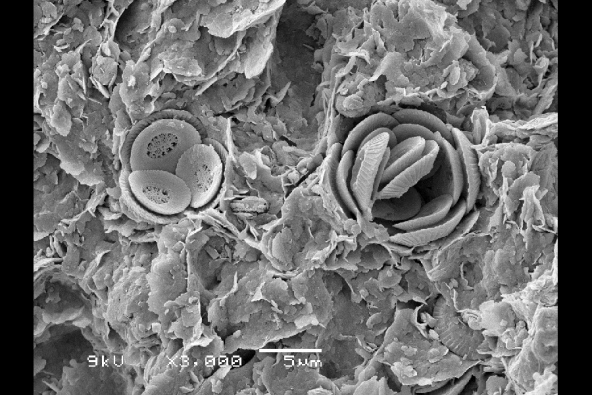Tiny fossils hint at effects of ocean acidification
Sediment-bound specimens allow comparison of ancient and present responses to changing oceans.
A rare find of stunningly intact fossils of prehistoric plankton will allow researchers to study how the tiny marine organisms cope with rising acidity in the oceans.
Finding such intact specimens of coccolithophores, micrometre-sized marine plankton encased in discs of calcium carbonate, is a real coup — searching for fossils of calcified single-celled organisms often yields only skeletal bits that have fallen to the ocean floor.

Scanning electron microscope image of rock surfaces collected from the Bass River core in New Jersey. Image Credit: Paul Bown
“Breaking open undisturbed 56-million-year-old sediment samples, we can image coccolithophores — right down to their intracellular vesicles — using a scanning electron microscope,” said Paul Bown, a palaeoceanographer at University College London, who this week presented images of the fossils at the Third International Symposium on the Ocean in a High CO2 World in Monterey, California.
A growing concern among scientists is that ocean acidification, driven by climate change, will reduce the abundance of calcium carbonate in the seas, making it difficult for algae to form their microscopic plating, essential for their survival. With intact fossils in hand, researchers can compare the sizes, shapes, thickness and growth rates of ancient and modern coccolithophores.
Read the full article: Nature doi:10.1038/nature.2012.11500




